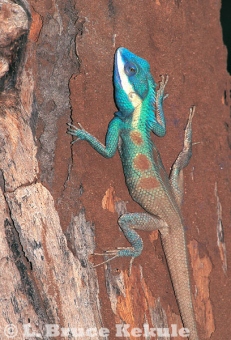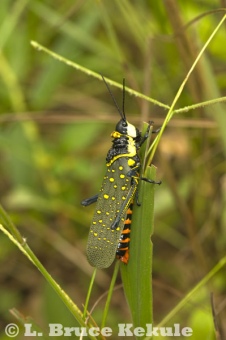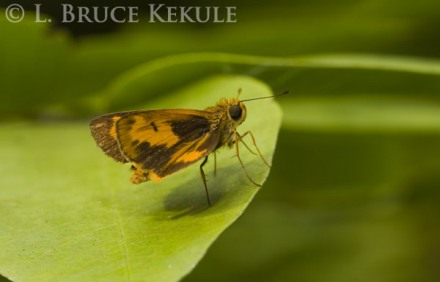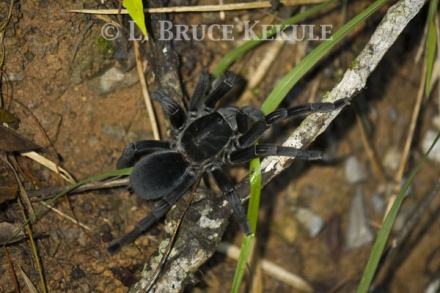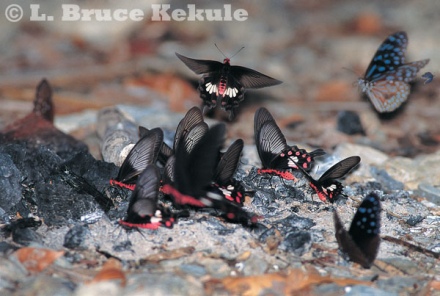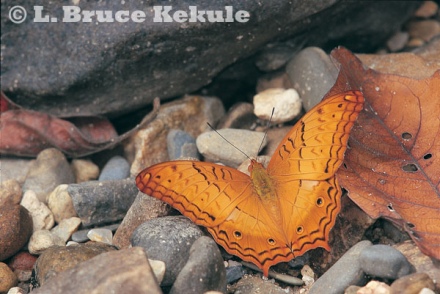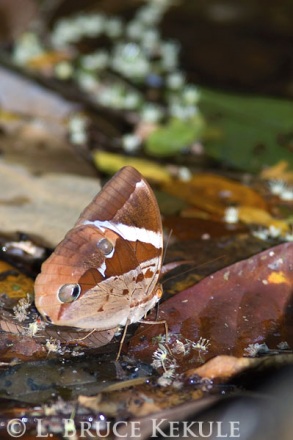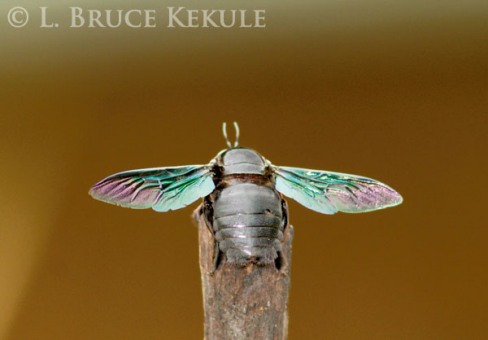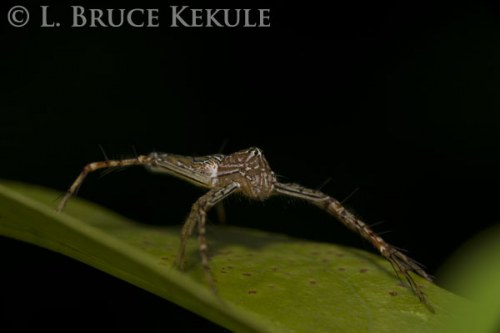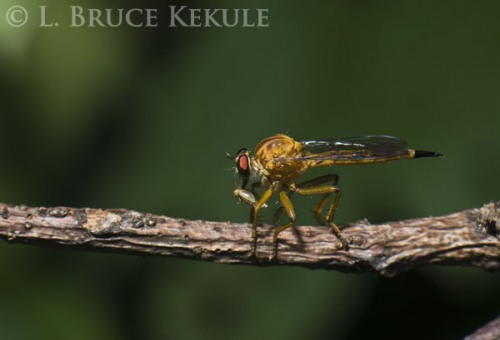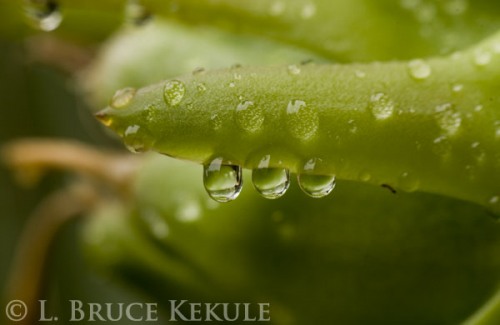Posts Tagged ‘close-up’
Thailand’s Miniature World – Part Two
Photographing Mother Nature’s little creatures
Close-up and macro photography: Additional photographs
After more than 15 years of taking wildlife close-ups and macro shots, the following photographs are a collection assembled for this post. Some are from my old film archives and others are recent digital captures. It is hoped these images will instill upon others the positive aspect of photographing nature; whether its the little critters all the way up to the majestic elephant.
However, the message is the same: wildlife photographs are a way of expressing the need to protect and save Mother Nature’s wonderful creations through exposure, education and conservation awareness at all levels of society. The more people learn about the Kingdom’s natural heritage, the better its chances of survival into the future!
Birdwing butterfly in Lampang province
Orb spider at Angkor Wat in Cambodia
Changeable lizard in Chiang Mai province
Blue crested lizard in Salak Phra Wildlife Sanctuary
Oakleaf butterfly in Thung Yai Naresuan Wildlife Sanctuary
Lantern bug in Chiang Mai province
Short-horned grasshopper in Chiang Mai
Bombay locust in Phu Khieo Wildlife Sanctuary
Foilage spider in Lamphun province
Skipper butterfly in Chiang Mai province
Lime butterfly in Thap Lan National Park
Bird-eating spider in Phu Khieo
Carpenter ants in Thung Yai
Common rose and blue tiger butterflies in Thung Yai
Cruiser butterfly in Sai Yok
Damselfly in Salak Phra
Dragonfly in Thung Yai
Dragonfly in Suphan Buri province
Hawk moths mating in Huai Kha Khaeng
Rhinoceros beetle in Salak Phra
Green-bellied pit viper in Kaeng Krachan
Wild hibiscus flower in Huai Kha Khaeng
Thailand’s Miniature World – Part One
Photographing Mother Nature’s little creatures
Close-up and macro photography: Intricate elements and gear
Yellow-bellied pit viper and carpenter ant in Kaeng Krachan
It is the rainy season and the day is cloudy like most during this time of the year. The rains have stopped temporarily, and the sun peeks through the clouds. Insects, spiders and other creatures such as reptiles and amphibians are extremely active in the forest when precipitation is at its highest.
While walking down a streambed in Kaeng Krachan National Park, southwest Thailand, a yellow-bellied pit viper found on a tree branch is perfect for some serious close-up photography. However, pit vipers can be deadly and extremely quick to strike.
Yellow-bellied pit viper slithering up a tree branch
I keep my distance as the serpent hangs motionless in a coiled position ready to sink its fangs into any victim. I quickly set-up my tripod and my favorite close-up rig at the time, a Minolta D7 digital camera and 200mm f 2.8 lens with a 1.4 tele-converter for an overall length of 280mm.
The most appealing feature of this lens is it can be used further away from the subject than a shorter lens, while flattening the perspective by bringing the foreground and background together. When a wide aperture is used, it will isolate the subject against a blurred background. The 280mm was also handy in the field.
Green-bellied pit viper on forest leaf litter in Kaeng Krachan
I was able to photograph the dangerous reptile from a safe distance. It was a two-day walk to the road and if bitten, I might not make it to the nearest hospital in time. Vipers are not aggressive unless provoked.
While photographing the snake, a one-inch long carpenter ant moved into the frame while I snapped a series of images. It was surely exciting, and two species in one photograph is always a neat experience. In the forest nearby, a green-bellied pit viper in fallen leaves hunting for prey is found. Pit vipers are very common in Kaeng Krachan.
Giant tree frog in a stream in Kaeng Krachan
Along this same stream a day later, we bumped into a rare green tree frog, the largest of this genus. It stayed in place long enough for some good shots but eventually jumped away. A couple days later, I also photographed a river toad further down stream.
River toad in a stream in Kaeng Krachan
While setting-up camera-traps at a mineral lick just off this same stream, a king cobra showed up. Now that was a heart stopper as the big snake rose up. I softly told everyone to stay absolutely still. It then lowered itself and slid back the way it had come. Everyone in the team had the jitters. I had absolutely no time to get any photos and was relieved the ‘king’ was gone. We decided to name this place the ‘King Cobra’ mineral lick.
King cobra hunting by the Phetchaburi River in Kaeng Krachan
However, I once photographed a king cobra near the headwaters of the Phetchaburi River in Kaeng Krachan, and managed a few off-hand close-up shots with my Minolta before it disappeared into the forest in a split-second. Some photographs are just not worth the risk but this happened so quickly that I snapped away oblivious to the danger. The undisputed ‘king of the forest’ is definitely not a recommended subject for close-up photography.
King cobra just before disappearing into the forest
When I began shooting wildlife with a camera, close-up or sometimes called ‘macro photography’ grabbed my attention. It seemed like the perfect solution to spend time when the large mammals and birds were scarce or while around camp. I reckoned Thailand’s miniature wild world was just as important as the big flora and fauna. Now, it is one of my favorite pass times. Sometimes, chasing the little creatures is not that easy and many variables come into play.
Forest crested lizard in Kaeng Krachan
My first macro lens was a Nikon 60mm that was great for flowers and stationary subjects but not very good for lively butterflies and such. I quickly up-graded to a Nikon 80-200 f 2.8 zoom with a close-up lens attachment which screws on the front of the lens. I also used extension tubes between the camera and lens. This allowed closer focusing throughout the entire zoom range. I photographed many small bugs, spiders, and other subjects of interest including flowers and natural abstracts using this combo.
Tortoise beetle in Kaeng Krachan
Since my early beginnings, I have purchased many cameras and lenses over the years. For close-ups and macro shots, I now carry my trusty Nikon D700 camera (full-frame sensor) and two lenses: a fixed Nikon 105mm f 2.8 VR (vibration reduction) and an older fixed Nikon Micro 200mm f 4. I also use a Nikon D5000 camera (1.5X sensor) with a Sigma 70-300mm Macro lens (effectively a 105-450mm) for more reach, and because it is much lighter than the D700 camera in some situations.
Champange mushrooms in Kaeng Krachan
My favorite lens now is the Nikon 200mm that I find perfect for just about everything and the focal length yields a good working distance. It allows close work on distant subjects that are skittish like butterflies, dragonflies and damselflies. Bees, hornets and wasps are best photographed from a distance for obvious reasons, as are snakes that are poisonous mentioned earlier. If the subject is stationary like beetles, dew-laden insects and spiders, flowers and abstracts, I prefer the Nikon 105mm lens.
Little map butterflies mating in Kaeng Krachan
Whenever I travel and stop by the highway for a rest or nature’s call, or when at base camp in the forest, I always have my camera and close-up lenses with me. You never know when you might bump into a good photo opportunity. This rig is also set-up with a bracket and an off-camera flash with a sync cable that is needed for certain situations. I shoot this off-hand and the flash allows stop-action and sharp images.
Thairus butterfly in a stream in Kaeng Krachan
The difference between close-up and macro photography needs to be clarified to get an understanding of the two terms. ‘Close-up’ photography is usually applied to any situation where the subject is around one-tenth of life size or greater on the image sensor or film frame. The pit viper at the beginning is classified as a close-up.
Shield-backed bug in Lamphun province
‘Macro’ photography on the other hand, is when the subject is reproduced at a magnification of life size (1:1 ratio) or greater with an appropriate camera and lens. Up to four or five times (4:1 – 5:1 ratio) is possible with modern SLR (film) and DSLR (digital) cameras and some lenses, or a combination of lenses and accessories can capture very small subjects.
Stag beetle in Doi Inthanon National Park
Anything smaller than that is possible by using a camera attached to a microscope and is classified as ‘micro’ photography. For example: a photograph of an ant’s eye, a pinhead or smaller. However, this technique is beyond the scope of this story.
Scarab beetle at the top of Doi Inthanon, Thailand’s highest mountain
To better understand reproduction ratios, the following is a simple formula to get an indication of magnification: If a 25mm-long subject is focused so that it fits on a 25mm sensor, the reproduction ratio is 1:1 or 1x; that is, it is reproduced on the sensor at life-size. If a 50mm-long subject is focused so that it fits on a 25mm sensor, then it is reproduced at half-life size, or a ratio of 1:2 or ½x. And finally, if a 12.5mm subject is focused on a 25mm sensor, then it will be reproduced as a magnification of twice life-size, or a ratio of 2:1, or 2x, and so on. A bit technical but it gives an understanding of magnification in close-up and macro photography.
Carpenter bee landing on a perch in Sai Yok National Park
Depth of field, lighting and shutter speed is the three most important elements of close-up/macro photography. Depth of field is the zone in front and behind the point of focus that is sharp. Controlling depth of field is one of the most crucial rudiments in photography and can be checked by using a depth-of-field preview button available on some SLR and DSLR cameras. The use of the lens aperture (f-stop) and the amount of light using the ISO setting to determine shutter speed at the time the photograph is taken is important for sharp and properly exposed images.
Carpenter bee on its favorite perch in Sai Yok
There are many books and magazine stories on the subject of close-up/macro photography available from some bookstores, and these should be sought out to get a better idea what techniques and equipment is needed. Considered the ‘bible’ by many of this form of photography is a book entitled ‘Closeups in Nature’ by John Shaw, and even though this tome was written during the film era, it still teaches all the basics needed to get great shots of the small critters and their environment, and the equipment needed.
Carpenter bee in Tak province
Cameras may include some of the newer digital compact ‘point-and-shoot’ types that have close-up capabilities, and are probably the most reasonable option for beginners. The next step-up is the bridge cameras or SLR-style digital compacts. With the right accessories, close-up and macro photography is possible while the cost is still below the standard single-lens-reflex cameras that can be expensive at the pro-level.
Wood-boring beetle in Sai Yok
But the number one choice for serious amateurs and professional photographers who shoot the miniature world use a SLR or DSLR mentioned previously. There are many models and it all boils down to budget, plus the will to get the best images as the number one priority on the purchase of a camera body. Weight and bulk is also a factor. Most of the newer digital cameras are offering 12 megapixels or more.
Coppery-bordered ground beetle in Thung Yai Naresuan Wildlife Sanctuary
If you are a beginner, there are many brands and models to choose from. It is best to check them out at your local camera store and make a choice based on your own criteria. Talk to fellow photographers for advice and read as much as possible to get an idea what you need.
Wasp spider in Thung Yai
If you are shooting a SLR-type camera, the lens and technique is very important for crisp images. Brand names lenses are expensive whereas aftermarket ones can work just as well. Again, shopping for close-up/macro equipment is a matter of choice.
Wasp spider in Chiang Mai province
Lenses for this field exist almost exclusively as fixed focal length. On image quality, they are superior to a standard zoom lens. A high-quality close-up or macro lens can be a companion for life. The focal length you choose depends solely on the type of images you want. The Nikon 105 AF-S VR previously mentioned stands out in its class, because it is the first lens to offer an image stabilizer in the macro range. Other manufactures also offer high-tech bells and whistles, and its up to the photographer to choose.
Tunnel spider in Sai Yok
Extension tubes and some tele-converters that fit between the camera and lens can increase subject size. These can be found easily in most camera shops. Another option that I like is to install a close-up lens in the filter threads of a prime lens. These are not very expensive and add very little weight. However, they are not that readily available but a few specialty firms offer them through the Internet. I use a Nikon 6T close-up lens that is no longer manufactured for both my 105mm and 200mm that have a 62mm filter size.
Tunnel spider in Khao Ang Rue Nai Wildlife Sanctuary
Another way to get into the macro range with a standard lens, say like a 50mm, is to install a reversing ring. Another option is to stack lenses such as a manual 200mm with a 50mm reversed using a stacking ring and this can really get down into the 2:1 to 3:1 life sizes.
Jumping spider in Khao Ang Rue Nai
Other options are a bellows unit with a lens installed either normally or reversed. Depending on the extension and type of lens used, bellows devices allow for magnification ratios up to 6:1. But this is better suited for a studio set-up.
Robber fly with prey in Khao Ang Rue Nai
A sturdy tripod and ball head is very important along with an electronic shutter release for sharp images. But they are not always practical where a tripod leg can knock foliage and disturb the subject that will fly or jump away. A monopod will control up and down movement and is easier to set in place but should be used in conjunction with a diffused flash. It is my favorite set-up when I go afield looking for miniature subjects.
Robber fly with prey in Tak province
Natural light is the best choice for close-up/macro photography but not always possible and hence, a flash comes into play. Most flashes today have TTL (through the lens) metering that allows precise flash output. Many new cameras have a pop-up flash that can also be used as long as it can be adjusted for output, and are all right for most applications but should be used with some sort of diffuser like tissue paper in several layers taped over the flash lens to avoid harsh light.
Skipper butterfly in Chiang Mai province
An off-camera flash with a slip-on diffuser plus a bracket and sync cord is tops for close-up photography. It can be adjusted for distance to subject, shot off-hand, and is quick to use. A ring flash is another option for shadow-less lighting and off-hand work.
Lemon pansi on a wild cat scat in Thung Yai
As we pass the first decade of the 21st Century, more and more people are taking up photography as a hobby or profession. The camera and lens manufacturers are constantly bringing out newer and better makes and models, and it is confusing at times.
Water drops on a plant in Eastern Thailand
However, it is an excellent pass time and the world of close-up and macro photography is only limited by one’s own imagination. Get out with camera in hand, even if it is your own back yard, and give it a try. It could become a passion and one that I am thoroughly hooked on. I hope to capture as much wildlife on digital as possible, so that others can also appreciate the wonderful world of nature in miniature.





